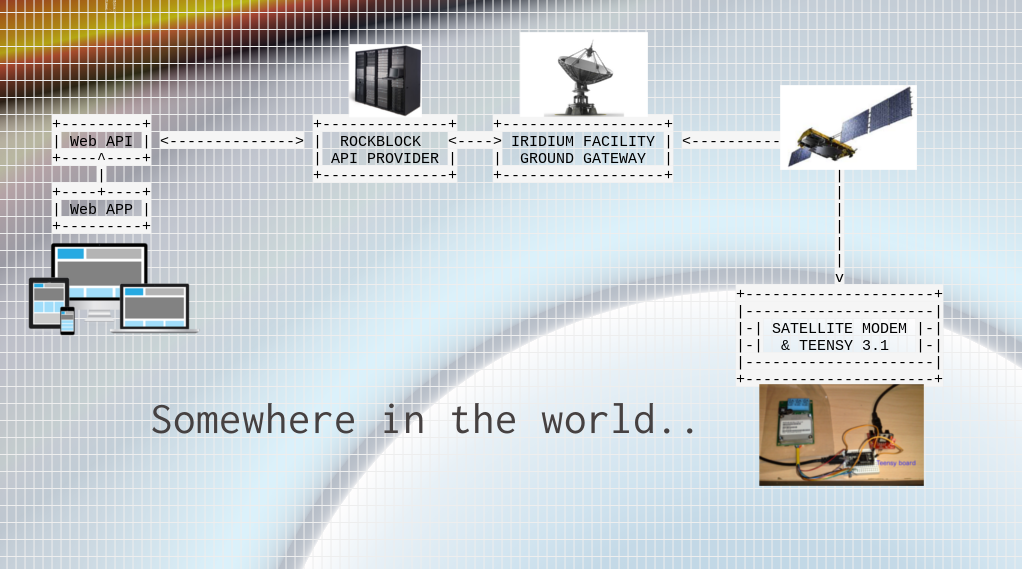Why, climate change and a short story..
This project began with a problem to solve for my ROV. Last year, I needed a method to connect my robot with a web application in order to receive its telemetry, any radio system was out of my purposes because the planned deployment location was very far from everything, even from the GSM network.I started to think to a satellite uplink.
After months of development, I created a system able to bridge the data from/to the robot via satellite link but I wasn't completely satisfied yet. There was another necessary step to do. I wanted to convert my device into an universal product and I had a thought in constant-looping into my head:
"What if we would have a satellite radio device, programmed from a web API, easy to
use, so universal to be connected with any kind of IOT sensor or any robot via serial
port, with low power consumption and cheap in terms of satellite traffic?"
I started to work on it further and I was proud about the results but after I realized it could be used for the scientific research as well. A very important topic for me is the climate change, I am a sailor and a scuba diving instructor, environment, the nature, the ocean is my second home...maybe the first..
..so this is IOTsatcom today!
A beautiful place I need to take care..
Addressing a world problem ..the CLIMATE CHANGE
Many scientists today need to gather an enormous amount of data, many of them work with a limited budget. They are pushed in their pursuit by their commitment to achieve a scientific result. We need them, we need people who care, we need people with strong motivation in science.
Scientists today will provide us the sustainability of life tomorrow.
- How to give them access to cheaper technologies?
- How to help them to focus in their scientific research and spend less time in engineering?
Other men want to have sensors too, control, mobile apps, telemetry everywhere. We see a great amount of IOT sensors on the market today but many solutions can't be provided yet.
Often the 4 common problems to face are:
- How to power the far away sensor?
- How to send the data to some remote processing system?
- This has to be cheap!
- Can we change the logic of the IOT sensor/robot from remote?
These questions rise in the context of the ROVs, with complex robots, with big green-houses, monitoring a forest, a volcano, in the ocean or with autonomous systems and sensors. There is a great amount of use cases still difficult to implement.
These problems are even more evident in the case of the study of the CLIMATE CHANGE.I did a search on the web and the results are interesting, some URL links:- A review of global ocean temperature observations: Implications for ocean heat content estimates and climate change
- "If you want to measure outgoing radiation with the accuracy necessary to understand global climate change, you have to make measurements everywhere, all the time"
- google books: climate change and references about sensing with iridium network
- Nature magazine: The role of satellite remote sensing in climate change studies
- usna.edu: The use of remote sensing in climate change research
- unoosa.org: The Applications of Satellite Remote Sensing on Climate Change
Some examples of systems using the Iridium satellite network:
A satellite communication system from the ARGO float sensor in the field of environment research
[from www.argo.ucsd.edu]
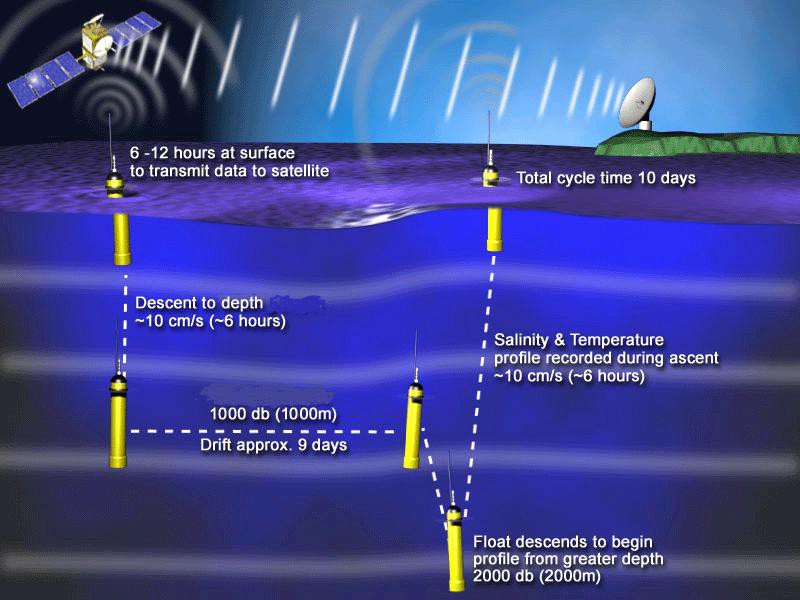
Another use case example about a robot funded by NASA
[image from Nasa archive]
[article from http://www.tgdaily.com]
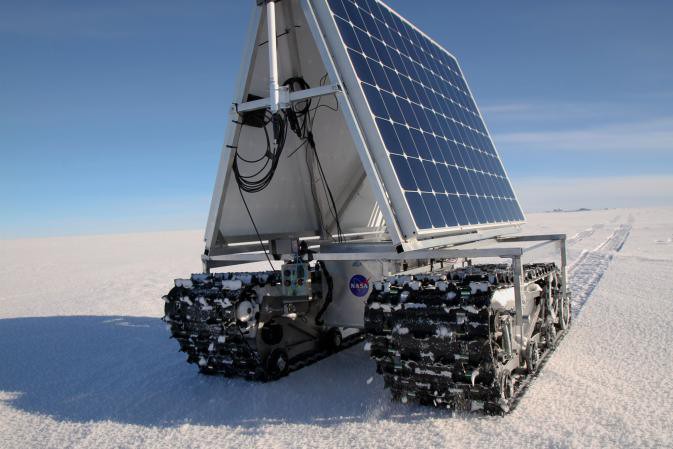
IOTsatcom helps the study of the CLIMATE CHANGE
- The scientists need to gather a lot of data, in remote locations, almost everywhere.
IOTsatcom is a satellite communication device with a 32bits ARM cortex M4 CPU from Freescale, leader in the sector of automotive due its superior reliability and performances.
- He needs to convert the system easily and fit different usage scenarios.
The core design from Teensy 3.1, supports many pins with several capabilties, GPIOs, ADC, PWM, hardware serial buses. The web application offers graphical commands to reprogram the system via satellite link.
- He needs to sit down in front of the data and be relaxed, ready to think.
The backend and the graphical web application help the user, he needs to be in comfort enough to focus in the primary purpose of his project and less in engineering. IOTsatcom wants to address exactly this problem.
- No money, no party.
IOTsatcom is for low budgets and mass replication, the number of extra components is minimal, a battery, a solar panel, eventually an external antenna.
The logic flow diagram
![]()
IOTsatcom benefits and features:
IOTsatcom provides benefits for everybody, the hobbyist, the professional, the "poor man" scientific scientist:
- CHEAPER
The device cost is lower than a commercial proprietary systems.
The protocol uses very low traffic saving satellite credits.
Grouping of data with different sending interval of each one.
No need of IT tech gurus, nor engineers (..sigh), it is easy to setup on the web GUI
- LOTS OF GOODIES
Everything is included, the online web API and the backend are ready to gather zillions of data.
No need to add further modules or CPUs to have GPIOs capabilities, ADC readings, sensing.
Small enough to fit into a reduced sensor case, the antenna can be mounted externally.
It is the bridge between the web application and the IT sensors or robot.
- LOW POWER
Enough "Low Power consumption" to run on battery and recharged by solar panels.
Sleep status available and satellite signal strength meter to enable the communication.
The energy saving strategies improve the power efficiency.
- TWO-WAY GLOBAL SATELLITE NETWORK
Iridium satellite network is everywhere in the world above in the sky.
Two-way link (RX/TX) to send commands back to the sensor or robot.
- OPENSOURCE, OPENHARDWARE
Schematics and PCB layouts available, firmware on Github
Because we need a proved technology, ready to modify, without secrets
IOTsatcom must be easy and available to everyone
The users need an advanced device, smart and solid, so intelligent to provide different uses with minimal human intervention. Easier to use then more powerful and smarter is the tool, this is the challenge that IOTsatcom needs to win.
Why it is ECO friendly
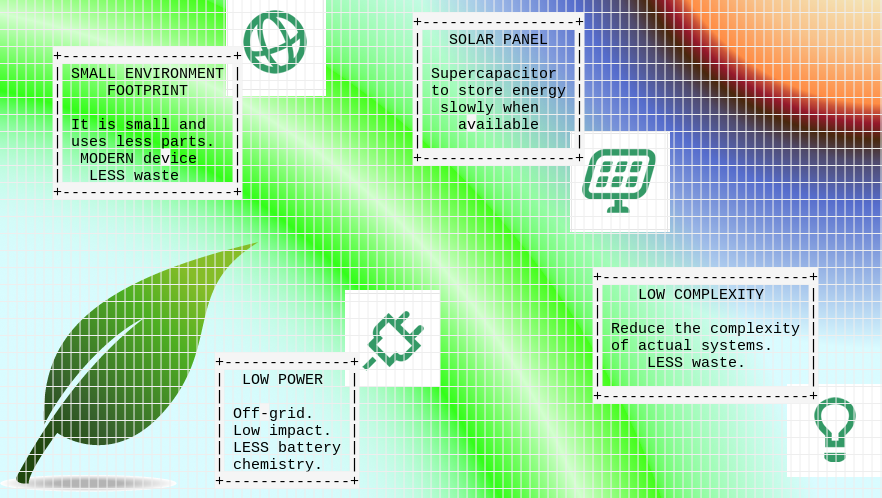
- Solar Panel
The use of alternative energy sources is mandatory today and we need to modernize the systems to allow that.
- Low power device
You don't need a power plug, thankfully there is a super capacitor to store energy at low rates, the timings and the sleep status will take care to use the limited available energy at the right time. There is a function in the code to implement a strength signal meter of the satellites to enable the uplink just when they are very well above the horizon.
- Low complexity to reduce systems size
Iridium satellite signals covers everywhere, this avoids cabling and complex networks of hardware. This implementation requires just few parts and can be assembled in a modular fashion by the hobbyist, student or professional.
- Small environment footprint, modern, less waste
The Freescale CPU used in Teensy 3.1 is advanced enough to perform complex tasks without so many external components. The modem is an HI-TECH piece of hardware, integrated antenna, still small with a single connector. Low power, energy efficient.
The energy saving strategies
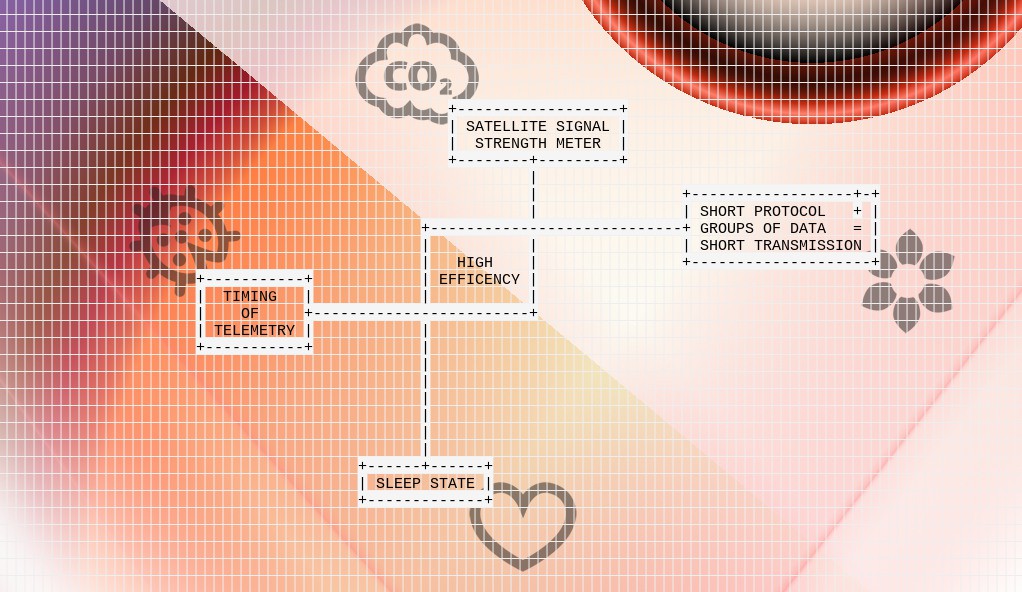
- Satellite signal strength meter
The code provides a function to measure the satellite signal, in case the signal is too weak (e.g. because the satellite is low on the horizon) the message is queued in memory and the CPU continues to test the signal until it is enough strong to allow a communication, then the queue is sent to the modem.
- Sleep state
The modem is the device that consumes more current and in this state it needs just 20uA to allow a fast wake up. During the awake state the modem consumes 50mA and is able to receive a ring signal from the Iridium network. If the modem is in sleep state during a ring, the ring is queued by the Iridium network. The CPU, by itself, can enter in sleep mode when the IOTsatcom is not in use.
- Timing of the telemetry
We don't need to receive the full dataset at the same time, we can organize the data in groups and give them different timings.
IOTsatcom sends the telemetry at determined intervals, the interval length could be configured via the web platform, each group of data has got its interval. This function greatly reduces the transmission cycles because in a full telemetry, we don't need to receive some values so often, so they can be grouped and give to them a longer time interval.
- Short communications
The data length is always sent as short as possible to allow less power usage during the transmission (and credits saving as well...$$$). The grouping of the data permits less values to send at time, the user configures on the web platform the groups and their time intervals, some of them could be disabled. The efficiency of the protocol contribute to reduce further the length of the entire message.
All these strategies together allow IOTsatcom running at the highest possible ENERGETIC EFFICIENCY.
IOTsatcom is engineered to be powered with a battery recharged by a solar panel.
About the RockBlock Mk2 from Rock Seven
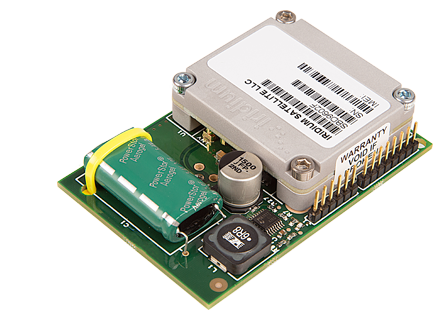
This modem represents the communication engine of the IOTsatcom, it is a smart device with a processing unit on-board able to manage the uplink with the Iridium satellites. It comes in 2
versions:
- Integrated antenna
- With SMA connector
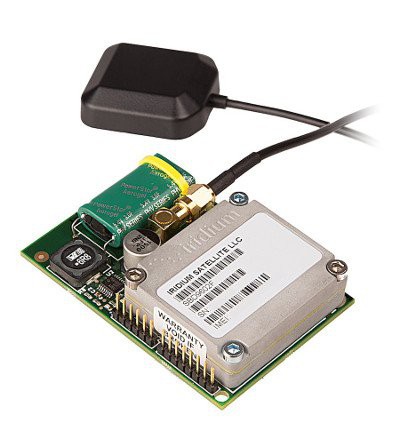
The power supply can be as low as 100mA @ 5V during the out of sleep status. The amount of available power supply directly affects the frequency of communications. The supercapacitor helps storing the energy even with a low flow rate of current available. At the heart of RockBlock is an Iridium 9602 modem. The RockBlock is connected by serial port to our Teensy core block. With a good view of the sky, it is possible to send/receive approximately once every 40 seconds.
The RockBlock can:
- send 340 bytes per message
- receive 270 bytes per message
Every messages counts as a credit and you need to buy them from the manufacturer website.
There is also a monthly line rental in order to keep active the account.
About the RockBlock link with the IOTsatcom API:
- Transmit
The RockBlock sends the message to the Rock Seven API HUB, then it will be HTTP pushed to the IOTsatcom website using its REST API.
- Receive
The user sends a command from the IOTsatcom website, the platform forwards the command to the Rock Seven API HUB, the Iridium satellite network delivers it to the RockBlock.

Two ice cream flavours
{.. two ways to build the IOTsatcom}

PROTO-NOCCIOLA
Build a prototype
Order off-the-shelf modules, assembly and program a prototype.
You are ready to send your first telemetry in the space!
This is a great method to explore this project and understand if it is fits your purposes.
PCB-STRACCIATELLA
Assembly the PCB and get ready for the deployment
Order the custom PCB from OSHPark and the required components, solder and upload the firmware.
This is the preferred method in case you need a solid, ready to deploy device.
The API is available
In both flavors you can take advantage of the online web platform provided by me for all the users, the subscription to the service and its API are FREE for tracking and communicate with a single IOTsatcom device.
Project submission TODO list {the hacker way}

Thank you! Cheers.
Fabio Balzano
 Fabio Balzano
Fabio Balzano
